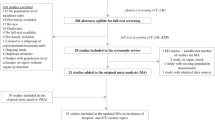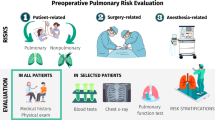Abstract
Background
Little is known about the rates of provision of CPAP in inpatient settings. A single prior “data mining” study using diagnostic and procedural codes concluded that 6% of people with sleep apnea receive CPAP when in the hospital. The purpose of this study is to reexamine the frequency with which people who have an established diagnosis of sleep apnea receive therapy for it when they are admitted to the hospital for other reasons.
Methods
A retrospective cohort study of 195 people with an existing diagnosis of obstructive sleep apnea admitted to a tertiary medical center from March 2009–July 2009. A logistic regression analysis was used to determine relative risk for provision of CPAP therapy controlling for the following variables: admission diagnosis, unit of admission (medical/surgical/psychiatric/pediatrics), length of stay, comorbidities, and patient characteristics (age/ race/ gender).
Results
Twenty-six percent of people with an established diagnosis of OSA received CPAP therapy during their hospitalization. In an additional 10%, therapy was offered but not implemented. Of the variables considered, only admission diagnosis of obesity (n = 3) was associated with an increased likelihood of receiving CPAP.
Conclusions
This rate of provision of CPAP to hospitalized patients, while low at 26%, is much higher than a previous study on this topic that estimated frequency of use of CPAP strictly linking diagnostic codes for OSA and procedural codes for CPAP.
Similar content being viewed by others
References
[Anonymous] (1994) Indications and standards for use of nasal continuous positive airway pressure (CPAP) in sleep apnea syndromes. American Thoracic Society. Official statement adopted March 1994. Am J Respir Crit Care Med 150(6 Pt 1):1738–1745
Young T, Peppard PE, Gottlieb DJ (2002) Epidemiology of obstructive sleep apnea: a population health perspective. Am J Respir Crit Care Med 165(9):1217–1239
Arzt M, Young T, Finn L, Skatrud JB, Bradley TD (2005) Association of sleep-disordered breathing and the occurrence of stroke. Am J Respir Crit Care Med 172(11):1447–1451
Aoki T, Akonori E (2005) Sleep disordered breathing in patients with chronic obstructive pulmonary disease. COPD 2:243-244-252
Fung JW, Li TS, Choy DK, Yip GW, Lo FW, Sanderson JE, Hui DS (2002) Severe obstructive sleep apnea is associated with left ventricular diastolic dysfunction. Chest 121(2):422–429
[Anonymous] (1993) Working group on OSA and hypertension. Obstructive sleep apnea and blood pressure elevation: what is the relationship? Blood Pres 2:166-167-182
Colt HG, Haas H, Rich GB (1991) Hypoxemia vs sleep fragmentation as cause of excessive daytime sleepiness in obstructive sleep apnea. Chest 100(6):1542–1548
Gross JB, Bachenberg KL, Benumof JL, Caplan RF, Connis RT, Cote CJ, Nickinovich DG, Prachard V, Ward DS, Weaver EM, Ydens L, Yu S (2006) Practice guidelines for the perioperative management of patients with obstructive sleep apnea: a report by the american society of anesthesiologists task force on perioperative management of patients with obstructive sleep apnea. Anesthesiology 104(5):1081–1093, quiz 1117–8
Spurr KF, Graven MA, Gilbert RW (2008) Prevalence of unspecified sleep apnea and the use of continuous positive airway pressure in hospitalized patients, 2004 national hospital discharge survey. Sleep Breath 12(3):229–234
Gay P, Weaver T, Loube D, Iber C (2006) Evaluation of positive airway pressure treatment for sleep related breathing disorders in adults. Sleep 29(3):381–401
MacGeorge JM, Nelson KM (2003) The experience of the nurse at triage influences the timing of CPAP intervention. Accid Emerg Nurs 11(4):234–238
Frey WC, Pilcher J (2003) Obstructive sleep-related breathing disorders in patients evaluated for bariatric surgery. Obes Surg 13(5):676–683
Acknowledgements
The authors wish to thank Thomas Walsh, Ph.D., MSPT for his advice in design of this study for his assistance in the statistical analysis.
Conflict of interest
This study was conducted with financial support from the Department of Community and Family Medicine at Dartmouth Medical School. There are no conflicts of interest or off-label or investigational use of products.
Author information
Authors and Affiliations
Corresponding author
Rights and permissions
About this article
Cite this article
Sorscher, A.J., Caruso, E.M. Frequency of provision of CPAP in the inpatient setting: an observational study. Sleep Breath 16, 1147–1150 (2012). https://doi.org/10.1007/s11325-011-0621-y
Received:
Revised:
Accepted:
Published:
Issue Date:
DOI: https://doi.org/10.1007/s11325-011-0621-y




